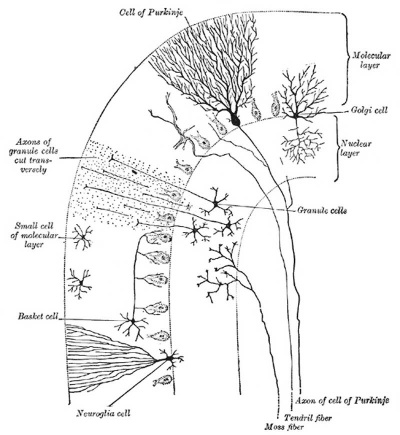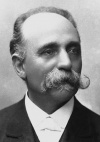Template talk:Cerebellum Vignette
From Embryology
Original Table
Much of the basic structure of the cerebellum comes the historic histological studies and staining of Ramón Cahal (1852 - 1934) and Camillo Golgi (1843 - 1926).
| Cerebellum History | |
|---|---|
|
Santiago Ramon y Cahal (1852 - 1934) a Spanish researcher used then new histology Golgi staining techniques to identify the cerebellum cellular structure.
His work was a turning point in our understanding of the structure of the brain, that until then had been described as a "syncytium" and not consisting of discrete cellular elements. For this research and other work on defining the structure of the brain he, along with Camillo Golgi (1843 - 1926), received the 1906 Nobel Prize in Medicine. Camillo Golgi (1843 - 1926) developed the histology silver staining technique, though is best known today for the cellular organelle that bears his name, the Golgi apparatus.See also the early descriptive study by Palmgren (1921 )[1] |

Transverse section of a cerebellar folium. |
| See also the description by Myers BD. A study of the development of certain features of the cerebellum. (1920) Contrib. Embryol., Carnegie Inst. Wash. 41: | |
- ↑ Palmgren A. Embryological and morphological studies on the mid-brain and cerebellum of vertebrates. (1921) Acta Zoologica. 64(5): 2-94.

